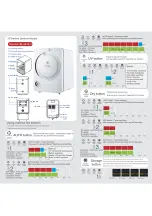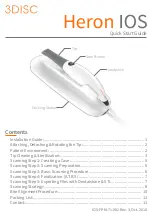
4
you can choose your installation point(s). Some useful
tricks you may wish to consider are:
De-Ice from the upstream side and let the current
•
help, rather than hinder.
Boats are designed to allow water to fl ow from
•
the bow to the stern with the least resistance. It is
generally easier to De-Ice a boat by installing the
De-Icer at or near the bow, angled to push the De-
Icing fl ow of water toward the stern.
It is generally easier to De-Ice a shallow area by
•
bringing the warmer water from a deeper area into
the shallow area. Angle your De-Icer from the
deeper water toward the shallow water.
When using more than one unit, it is better to angle
•
all units in one direction, creating a current rather
than installing De-Icers in opposing directions.
In tidal waters, split the difference in water depth
•
so the De-Icer is in shallow water at low tide and
deep water at high tide. If you are De-Icing a boat,
it is easier to tie your De-Icer to the boat and allow
the boat and De-Icer to rise and fall with the tide
together.
Shallow
water
Deeper
water
Deicer with Angle
suspension
Deicer
Deicer with Angle
Suspensions
Possible
dock
mounted
Deicer
for longer
docks
High tide
Low tide
Boat house,
fl oating or
crib dock
Open
water
buffer
Expansion Pressure
STEP FOUR
When installing your Kasco De-Icer for suspended
operation with the provided ropes, make sure the ropes
or suspension lines are spread at least 8 to 10 feet
apart. The high starting torque of your Kasco De-Icer
may cause suspension lines that are too close together
to twist up and possibly damage the electrical power
cord. Tie each rope with a secure knot from the dock
piling, cleat, boat etc. so the De-Icer hangs vertically.
Ice
Expansion
Pressure
Open water
buffer releases ice
expansion pressure
Kasco Horizontal
Flotation units
Shore
Shore
Ice
collars
Uneven
lifting is
common
Tide
Jacked
pilings
Diven
pilings
Suspended
Kasco Deicer
STEP TWO
Determine the best location(s) to install. A De-Icer
draws warmer, denser water from the bottom (4
O
C is
approximately water’s densest point) and circulates it
upward to the surface. Around docks and boats water
is usually fairly shallow, so look for somewhat deep
water to install your De-Icer. However, if your De-
Icer is installed too deep, the rising warmer water will
not effectively spread at the surface, thereby reducing
the De-Icing effect.
Note: A good guide is 4-6 feet deep for vertical
installation, and slightly shallower for angled
operation, but at least 1 foot off the bottom to
prevent clogging from debris. In colder climates,
warmer water is a more important factor than surface
circulation, so you may wish to install your De-Icer
deeper than the above guide lines. De-Icers generally
will work in shallower water, but are less effective
and due to the constraints of your installation, you
may have to settle for a shallower installation. It is
recommended that you experiment with more than one
possible location for the best installation results.
STEP THREE
When you have determined both your De-Icing
objectives and best installation points, it is time to
analyze what external constraints your De-Icing
location (structures, i.e., dock, boat, etc.) may have
that could affect the fl ow of warmer water at the
surface. Any obstruction at the surface of the water
may slow or stop the fl ow of warmer water. A natural
current, such as in a river, will tend to force your De-
Icing efforts downstream.
Once you have determined your external constraints,






























